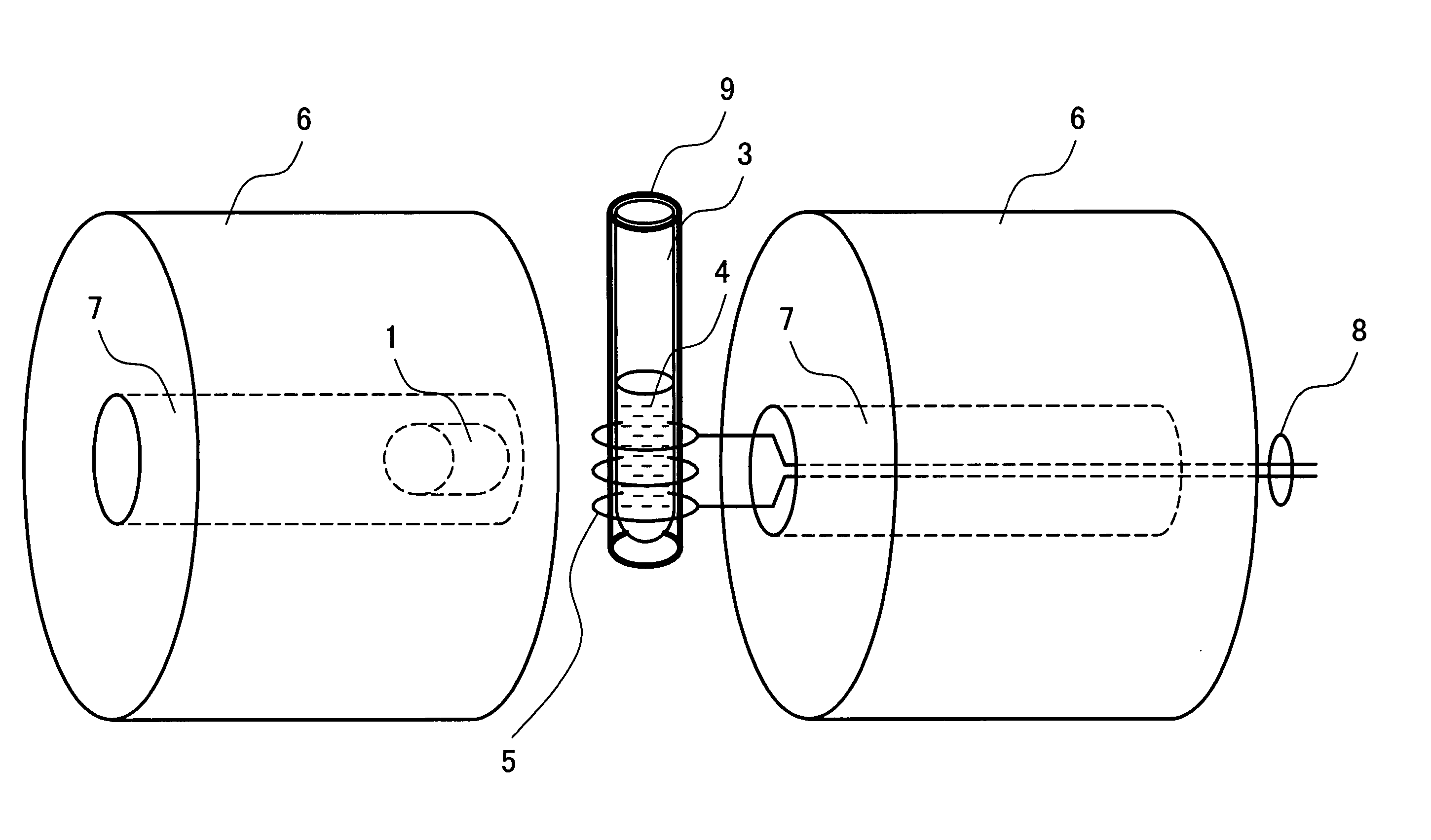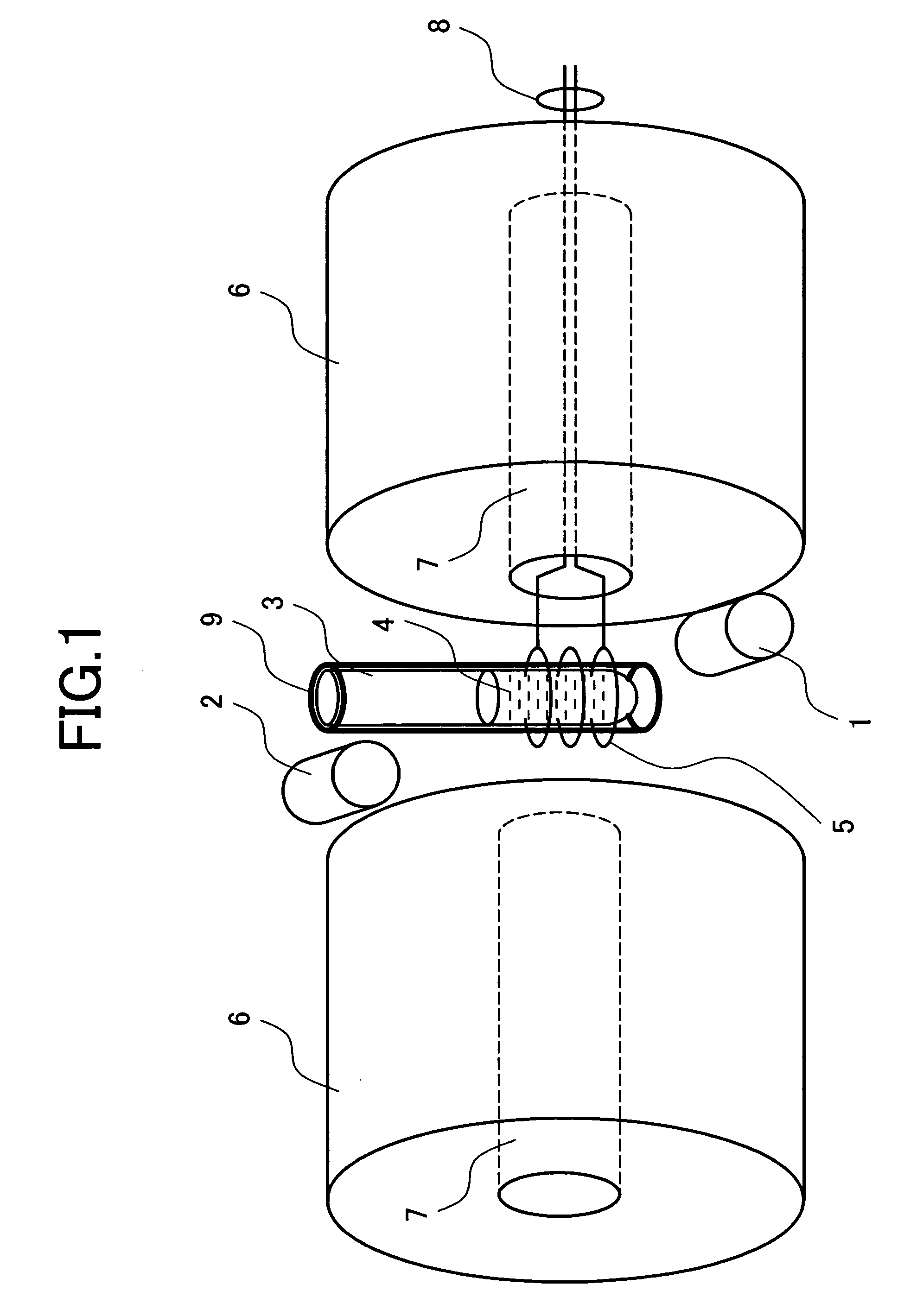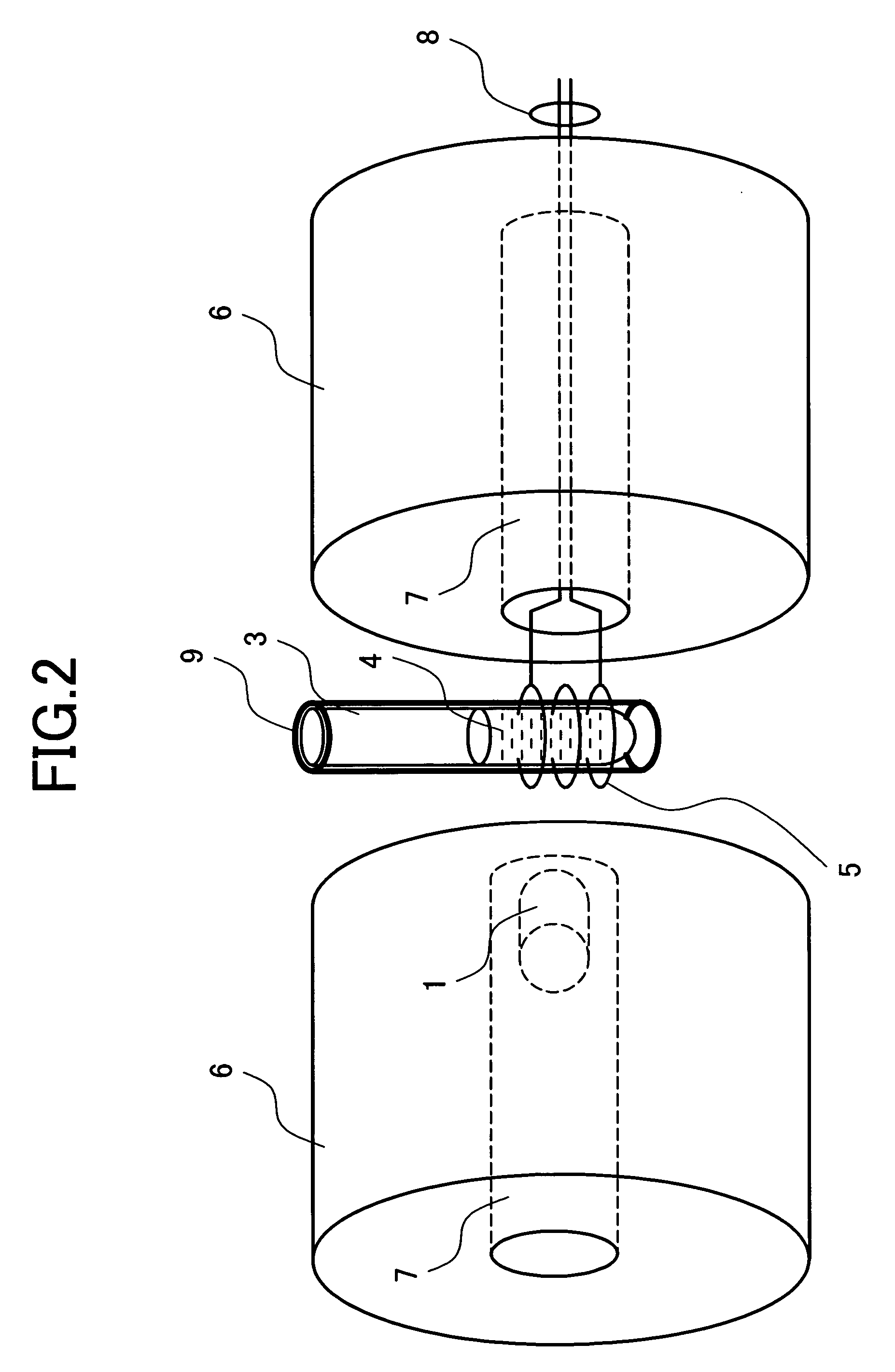Method and apparatus for multiple spectroscopy analysis by using nuclear magnetic resonance
a technology of nuclear magnetic resonance and multiple spectroscopy, applied in the field of multiple spectroscopy analysis, can solve the problems of large number of isotope labeled samples, difficult to obtain structural information, and affecting the skill of sample preparation, and achieves high binding activity
- Summary
- Abstract
- Description
- Claims
- Application Information
AI Technical Summary
Benefits of technology
Problems solved by technology
Method used
Image
Examples
embodiment 1
[0044] Protein analysis of multiple measurement of THz electromagnetic wave application and NMR measurement will be described in detail.
[0045] Protein included in the sample 4 has about 20 kinds of amino acid residues which are bound by peptide bond. Some of the residues having carbonyl in the portion called a side chain not contributing to the peptide bond exist. Depending on an aqueous solution condition, the side chain carbonyl has a doublet state in which a proton is ionized and one unpaired spin is provided near an oxygen atom. FIG. 5 shows the structural formula of the carbonyl in which a proton is ionized. As indicated by the arrows, when the entire sample is placed under a strong uniform static magnetic field, the unpaired electron spin of the side chain carbonyl is arranged in parallel with the magnetic field.
[0046] When the unpaired spin produced in the carbonyl is placed under a strong static magnetic field, energy is different in the state that it is directed in the pa...
embodiment 2
[0053] The electromagnetic wave application is combined with the nuclear magnetic resonance measurement to make it possible to observe the state change of various samples. The state change includes not only change brought about in the entire protein but also selective change focusing on the specified residue. The observation of the change in a protein structure brought about by electromagnetic wave application will be described below in detail.
[0054]FIG. 6 shows a target protein sample 103 obtained by subjecting protein 101 having aspartic acid or glutamic acid in the active center to isotope labeling 102 of aspartic acid or glutamic acid.
[0055] The binding of nuclear spins to be observed is determined. When comparing the change in chemical shift of an HN atom and an N atom, the 1H-15N-HMQC spectrum is used. When inspecting the strength of the interaction between hydrogens (that is, length between atoms), an NOESY spectrum is used.
[0056]FIG. 7 shows the procedure for observing th...
embodiment 3
[0063] An observation example about the protein-ligand interaction using THz electromagnetic wave application will be described below in detail.
[0064]FIG. 9 shows a target protein sample 105 obtained by binding, to ligand 104, sample protein obtained by subjecting the protein 101 having aspartic acid or glutamic acid in the active center to the isotope labeling 102 of aspartic acid or glutamic acid. In this way, sample preparation is performed so as to perform selective isotope labeling to the sample protein and binding the ligand 104 thereto.
[0065]FIG. 10 shows the procedure for observing the protein-ligand interaction.
[0066] (1) NMR measurement is performed by the sample 103 of target protein to obtain the spectrum 124-1 such as the 1H-15N-HMQC. The measurement is the same as measurement 1 described in Embodiment 2. The spectrum is a spectrum in the state that the target protein 103 is bound to none and is a spectrum as a reference of the following analysis. In particular, the ...
PUM
 Login to View More
Login to View More Abstract
Description
Claims
Application Information
 Login to View More
Login to View More - R&D
- Intellectual Property
- Life Sciences
- Materials
- Tech Scout
- Unparalleled Data Quality
- Higher Quality Content
- 60% Fewer Hallucinations
Browse by: Latest US Patents, China's latest patents, Technical Efficacy Thesaurus, Application Domain, Technology Topic, Popular Technical Reports.
© 2025 PatSnap. All rights reserved.Legal|Privacy policy|Modern Slavery Act Transparency Statement|Sitemap|About US| Contact US: help@patsnap.com



